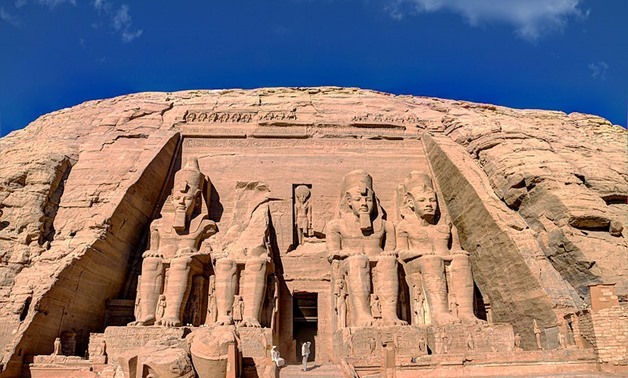
Abu Simbel Temple – Wikimedia
CAIRO – 6 January 2018: Ahmed Ali, official of Egypt’s press office of the State Information Service, announced that the famous French director Olivier Lemaitre directed a documentary about ancient Nubian temples.
The documentary highlights the stages of building the High Dam and the 50th anniversary of saving Abu Simbel Temple from drowning. The documentary’s last scene was shot inside Nasser Lake to show Nubian artifacts that were saved from drowning, such as the Nubian museum and the temple of Kalabsha.
Ali added that the documentary is expected to be screened on French TV in the coming period. He pointed out that Lemaitre will shoot part two of the documentary next February.
The director of the film is currently coordinating with international media production companies to produce the film. Lemaitre is seeking as well to create a partnership with the Egyptian television or the Ministry of Culture to produce this huge work because it promotes Egypt’s tourism industry.
The temple complex of Abu Simbel is one of the most popular monumental buildings in Aswan, which is located at the second cataract of the Nile River.
The temple, carved out of a sandstone cliff on the west bank of the Nile, was discovered twice. It was initially discovered in 1813 by Swiss researcher Johann Ludwig Burckhardt, and then rediscovered in 1817 by Egyptologist Govani Battista.
At the entrance of the Abu Simbel temple, there are two seated statues of the Pharaoh, showing the ruler with a short kilt, a beautiful headdress which is a double crown with a cobra and a false beard. Next to the statues’ legs, are smaller statues of the Pharaoh’s relatives. At the top of the temple is a row of 22 squatting baboon statues. The baboon’s cry was believed to welcome the rising sun.
Inside the temple, there are images and hieroglyphics, describing Ramses II’s victory at the battle of Qadesh, in addition to empty store rooms.
According to many scholars, this great temple was created to celebrate the victory of Ramses II over the Hittites at the Battle of Qadesh in 1274 BC. This means that the temple was situated on the border of the conquered lands of Nubia after many military campaigns were carried out by the Pharaoh against Nubia.
Abu Simbel is made up of two temples. The smaller one was built for Queen Nefertari and has two statues of her and four pharaohs; each about 33 feet (10 meters) in height.
Ramses II built this temple to impress Egypt's southern neighbors, and also to reinforce the status of the Egyptian religion in the region. Abu Simbel was one of six rock temples erected in Nubia during the ruling period of Ramses II and its construction took 20 years from 1264 BC to 1244 BC .
UNESCO considers Abu Simbel Temple one of the historical and monumental places that has to be protected against floods.
Comments
Leave a Comment